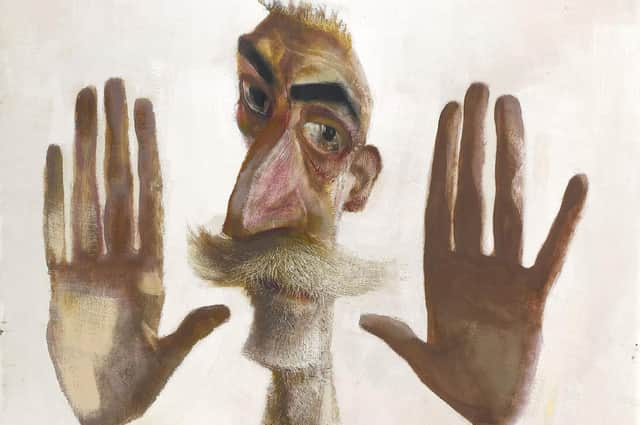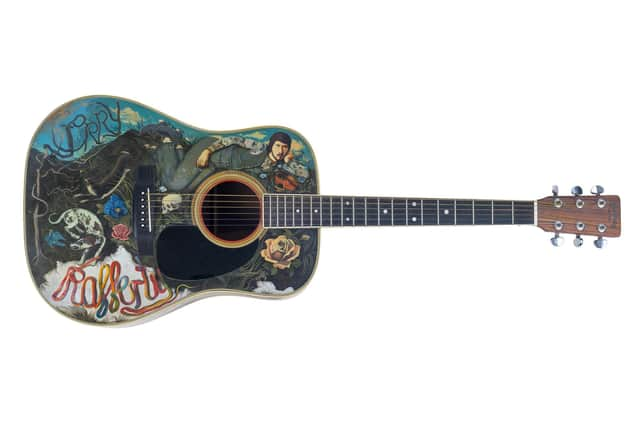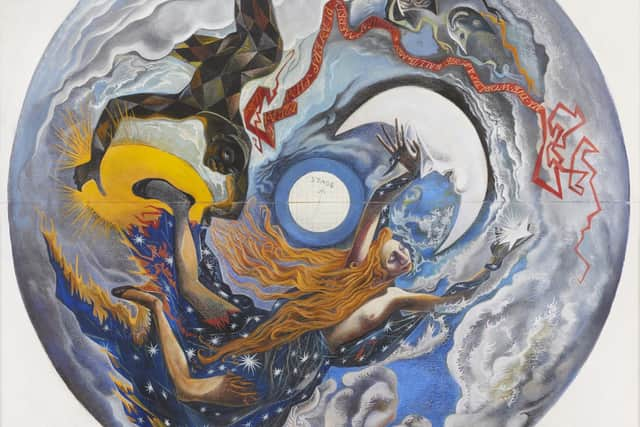Art reviews: John Patrick Byrne: a Big Adventure | John Byrne, Ceci n’est pas une Retrospective


John Patrick Byrne: A Big Adventure, Kelvingrove Art Gallery and Museum, Glasgow *****
John Byrne, Ceci n’est pas une Retrospective, Fine Art Society, Edinburgh ****
Advertisement
Hide AdJohn Byrne is a shape-shifter, a man in constant metamorphosis, or at least that is how he presents himself in the self-portraits which are at the heart of his work. In his major retrospective in Glasgow, John Patrick Byrne: A Big Adventure there are more than 40 of these and there are another half dozen in the smaller concurrent show at the Fine Art Society in Edinburgh. Fittingly perhaps, the latter is a bit of shape shifting show, too. As works have sold, the walls have changed, but nevertheless it complements the Glasgow show very nicely. To return to all those self-portraits, however, there is nothing of vanity about them, nor indeed do we seem to be witnesses to an ongoing saga of introspection. They are more like masks he is trying out, though you sense what is behind the mask may be as much a mystery to him as to us.


In early examples like the celebrated Self-Portrait in a Flowered Jacket, or the life-size diptych, Self-Portrait with Red Palette, he seems romantic, but withdrawn and watchful. Even so, they are not often straightforward. In the latter picture, for instance, the left half of the diptych is just a blue wall. He is in the right half, but looks as though he is not at all sure about staying to be painted. In The Studio of 1975, in Glasgow hung among the self-portraits, although there is ample evidence of his presence in the cigarette butts on the floor and his scattered painting materials, he himself has vanished. It is painting of an empty room. In later self-portraits he assumes all sorts of disguises. He is a sailor, or a cat-burglar, or is haunted by his skeletal alter ego. Frequently he is holding a cigarette and wreathed in smoke rings. In one picture he is looking at us with his hands raised as though they were pressed against a pane of glass between us. In another, his one visible eye, though in shadow, looks out at us with unsettling directness, but as time passes he becomes increasingly gaunt and melancholy. In the most recent self-portrait, which is at the Fine Art Society, everything is black and white except for a red sun and his red-rimmed eyes, and he has sunk to the very bottom of the picture.
Also at the Fine Art Society in a particularly beautiful self-portrait seen against a night sky, a label he is holding states enigmatically “Ceci n’est pas un autoportrait.” Indeed the whole show at FAS is titled Ceci n’est pas une Retrospective. The retrospective is in Glasgow after all, but both titles play on Ceci n’est pas un pipe, a famous work by one of Byrne’s heroes, the surrealist painter Magritte. He wrote to Magritte when he was a despairing young artist and got a long, thoughtful and encouraging response and now, if you ever could categorise him as an artist, it would have to be as a surrealist. His reality is fluid as theirs was. He also engages with dreams and mental states and with nightmares too sometimes. In North East Apocalypse, for instance, beneath an apocalyptic sky vengeful skeletons straight out of Bruegel’s Dance of Death attack defenceless people.
Byrne is dizzyingly protean in the styles he deploys. He can paint himself as almost invisible in a cloud of smoke using the divided colour of the neo-impressionists, or still perfectly recognisable in the disjointed forms of cubism. There is even a big portrait here of the trustees of the Hamilton Bequest perfectly handled in the academic style of a boardroom commission. The money from it funded his first play, Writer’s Cramp, at the Traverse in Edinburgh in 1977 – more shape-shifting.
Back in the 1960s, after Glasgow School of Art, Byrne began his career, or at least he launched his success with a bold piece of shape-shifting. Struggling as artists did then, he was doing part-time teaching, but to make ends meet had also had to return to the carpet factory where he had been a colour-mixer, one of the slab boys immortalised in his play The Slab Boys. A very beautiful painting called The Night Garden and another of an owl, both from this period, clearly show the influence of the poetic paintings of the Douanier Rousseau. He was the most famous naive artist in history. Maybe that gave Byrne an idea, for in 1967 he sent a work to a gallery in London claiming it was by his father, a naive painter called Patrick Byrne. A long letter on view at the Fine Art Society to Mr Lister at the Portal Gallery is an extended fiction about his father’s hard life and the lonely solace of his paintings. It is clear that the gallery owner has taken the bait for – evidently in reply to a request for more – Byrne writes that he has visited his father and he has about 50 paintings in his “small house in Dunoon.” Byrne of course then provided the pictures, signing them Patrick. When the deception was revealed, fortunately the gallery took the hoax in good part. It might have been quite otherwise, but the show sold well. The Patrick pictures are very good and some indeed also big. The American Boy, for instance, is two by two-and-a-half metres. You wonder how it might ever have fitted in “the small house in Dunoon.”


Of course, Byrne is not just a painter. His protean achievement extends to the theatre and television with such hits as The Slab Boys and Tutti Frutti. Their wit and verve had a huge impact on Scottish drama, but they had a wider relevance too. There are several documentary films playing in the Glasgow show and in one of them he himself remarks how he has “plundered his own life story” for his dramatic writing. His dramatic work was revolutionary because it was retrospective, rooted in the life and language of his own background. For this reason, too, there is no real dividing line between the visual and the literary. They are drawn from the same well of inspiration. There are beautifully drawn story boards for the Slab Boys, 20 scenes to a sheet, on view in Glasgow alongside paintings of the characters in Tutti Frutti, and a picture of a skeletal military figure, much in the style Georg Grosz, is linked to the writing of Writer’s Cramp. All these pictures sit comfortably beside such constants in his work as the teddy boys and musicians of his youth and their distant dreams of America. The part of Paisley where he was brought up is described as having been one of the most deprived places in Europe. Music and flashy dressing were a vivid protest against this grim environment in the already very drab fifties. What an astonishingly fertile talent has blossomed from that dark soil – and, as his art makes clear, it is still firmly rooted there.
John Patrick Byrne: A Big Adventure until 18 September; John Byrne, Ceci n’est pas une Retrospective until 16 July